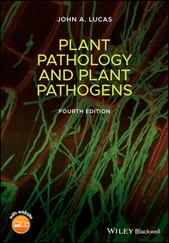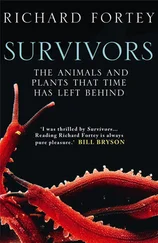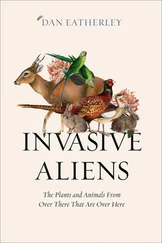Andrew H. Cobb - Herbicides and Plant Physiology
Здесь есть возможность читать онлайн «Andrew H. Cobb - Herbicides and Plant Physiology» — ознакомительный отрывок электронной книги совершенно бесплатно, а после прочтения отрывка купить полную версию. В некоторых случаях можно слушать аудио, скачать через торрент в формате fb2 и присутствует краткое содержание. Жанр: unrecognised, на английском языке. Описание произведения, (предисловие) а так же отзывы посетителей доступны на портале библиотеки ЛибКат.
- Название:Herbicides and Plant Physiology
- Автор:
- Жанр:
- Год:неизвестен
- ISBN:нет данных
- Рейтинг книги:5 / 5. Голосов: 1
-
Избранное:Добавить в избранное
- Отзывы:
-
Ваша оценка:
- 100
- 1
- 2
- 3
- 4
- 5
Herbicides and Plant Physiology: краткое содержание, описание и аннотация
Предлагаем к чтению аннотацию, описание, краткое содержание или предисловие (зависит от того, что написал сам автор книги «Herbicides and Plant Physiology»). Если вы не нашли необходимую информацию о книге — напишите в комментариях, мы постараемся отыскать её.
Discover the latest developments in herbicide and weed biology Herbicides and Plant Physiology,
Arabidopsis
Herbicides and Plant Physiology
Herbicides and Plant Physiology — читать онлайн ознакомительный отрывок
Ниже представлен текст книги, разбитый по страницам. Система сохранения места последней прочитанной страницы, позволяет с удобством читать онлайн бесплатно книгу «Herbicides and Plant Physiology», без необходимости каждый раз заново искать на чём Вы остановились. Поставьте закладку, и сможете в любой момент перейти на страницу, на которой закончили чтение.
Интервал:
Закладка:
3 Crop rotation: this is a very effective cultural approach to weed management. It prevents the proliferation of weed populations that can become dominant in monocultures. Rotations of annual, biennial and perennial crops are effective, as is the inclusion of leguminous crops, which also offers a positive nitrogen input. The inclusion of crops with allelopathic properties to inhibit weed growth has also been reported. In addition, mulching can provide soil cover that prevents light from reaching the soil surface, and so reduces or inhibits weed seed germination.
Sustainable weed seed management therefore consists of a range of alternative options to herbicide use that can prevent or lessen weed seed proliferation, rather than to control them when they interfere with crop growth and development. Finally, farmers and growers are now under increased pressure to reduce agrochemical inputs, yet they struggle with the need to control herbicide‐resistant weeds. We may expect new weed control technologies to emerge in the coming decades, such as robots that scan the growing crop, with directed lasers to control weeds.
References
1 Anon. (2000) Climate Change and Agriculture in the United Kingdom. London: MAFF.
2 Baker, H.G. and Stebbins, G.L. (1965) The Genetics of Colonising Species. New York: Academic Press.
3 Brooks, A., Crook, M.J., Wilcox, A. and Cook, R.T. (2003) A laboratory evaluation of the palatability of legumes to the field slug, Deroceras reticulatum Müller. Pest Management Science 59(3), 245–251.
4 Chancellor, R.J. and Froud‐Williams, R.J. (1986) Weed problems of the next decade in Britain. Crop Protection 5, 66–72.
5 Dexter, A.G., Rothe, I and Luecke, J.L. (1999) Weed control in Roundup Ready™ and Liberty Link™ sugarbeet. In: 30th General Meeting of American Society of Sugar Beet Technologists, Abstracts, p. 9.
6 Figueroa, P.F. (1989) Japanese knotweed herbicide screening trial applied as a roadside spray. Proceedings of the Western Society of Weed Science 42, 288–293.
7 Gajic, D and Nikocevic, G. (1973) Chemical allelopathic effects of Agrostemma githago upon wheat. Fragm. Herb. Jugoslav XXIII.
8 Grime, J.P. (1979) Plant Strategies and Vegetation Processes. London: Wiley.
9 Grundy, A.C. and Jones, N.E. (2002) What is the weed seed bank? In: Naylor, R.E.L. (ed.) Weed Management Handbook, 9th edn. Oxford: Blackwell/BCPC.
10 Hance, R.J. and Holly, K. (1990) Weed Control Handbook: Principles, 8th edn. Oxford: Blackwell.
11 Hanf, M. (1983) The Arable Weeds of Europe with Their Seedlings and Seeds. Hadleigh, Suffolk: BASF United Kingdom.
12 Hill, T.A. (1977) The Biology of Weeds. London: Edward Arnold.
13 Holm, L.G., Plucknett, D.L., Pancho, J.V. and Herberger, J.B. (1977) The World’s Worst Weeds. Distribution and Biology. Hawaii: University Press.
14 Inderjit, Callaway, R.M. and Vivanco, J.M. (2007) Can plant biochemistry contribute to understanding of invasion ecology? Trends in Plant Science 11(12), 574–580.
15 Kirby, C. (1980) The Hormone Weed Killers: a Short History of Their Discovery and Development. Croydon and Lavenham, UK: BCPC Publications/Lavenham Press.
16 Lacey, A.J. (1985) Weed control. In: Haskell, P.T. (ed.) Pesticide Application: Principles and Practice. Oxford: Oxford University Press, pp. 456–485.
17 Lampkin, N. (1990) Organic Farming. Ipswich, UK: Farming Press.
18 Liebman, M., Mohler, C.L. and Staver, C.P. (2001) Ecological Management of Agricultural Weeds. Cambridge: Cambridge University Press.
19 Lutman, P.J., Boatman, N.D, Brown, V.K. and Marshall, E.J.P. (2003) Weeds: their impact and value in arable ecosystems. In: The Proceedings of the BCPC International Congress: Crop Science and Technology 2003 1, 219–226.
20 Martin, T.J. (1987) Broad versus narrow‐spectrum herbicides and the future of mixtures. Pesticide Science 20, 289–299.
21 Moles, A.T., Gruber, M.A.M. and Bonser, S.P. (2008) A new framework for predicting invasive plant species. Journal of Ecology 96(1), 13–17.
22 Moss, S.R. (1987) Competition between blackgrass (Alopecurus myosuroides) and winter wheat. British Crop Protection Conference, Weeds 2, 367–374.
23 Naylor, R.E.L. (ed.) (2002) Weed Management Handbook, 9th edn. Oxford: Blackwell/BCPC.
24 Naylor, R.E.L. and Lutman, P.J. (2002) What is a weed? In: Naylor, R.E.L. (ed.) Weed Management Handbook, 9th edn. Oxford: Blackwell/BCPC.
25 Ødum, S. (1965) Germination of ancient seeds – floristical observations and experiments with archaeologically dated soil samples. Dansk Botanisk Arkiv 24(2), 1–70.
26 Oerke, E.C., Dehne, H.W., Schonbeck, F. and Weber, A. (eds) (1995) Crop Production and Crop Protection: Estimated Losses in Major Food and Cash Crops. Amsterdam: Elsevier.
27 Olofdotter, M. and Mallik, A.U. (2001) Allelopathy Symposium: introduction. Agronomy Journal 93, 1–2.
28 Patterson, D.T. (1985) Comparative ecophysiology of weeds and crops. In: Duke, S.O. (ed.), Weed Physiology, Vol. I: Reproduction and Ecophysiology, Boca Raton, FL: CRC Press, pp. 101–130.
29 Radosevich, S.R. and Holt, J.S. (1984) Weed Ecology: Implications for Vegetation Management. New York: Wiley.
30 Rodgers, E.G. (1978) Weeds and their control. In: Roberts, D.A. (ed.) Fundamentals of Plant Pest Control. San Francisco, CA: W.H. Freeman, pp. 164–186.
31 Shaw, D.S. and Tanner, R. (2008) Invasive species: weed like to see the back of them. Biologist 55(4) 208–214.
32 Sims, B., Corsi, S., Ghebounou, G., Kienzle, J., Taguchi, M. and Friedrich, T. (2018) Sustainable weed management for conservation agriculture: options for smallholder farms. Agriculture 8; doi: 10.3390/agriculture8080118
33 Tanner, R. (2008) A review on the potential for the biological control of the invasive weed, Impatiens glandulifera in Europe, In: Tokarska‐Guzik, B., Brock, J.H., Brundu, G., Child, L., Daeler, C.C. and Pyšek, P. (eds) Plant Invasions: Human Perception, Ecological Impacts and Management. Leiden: Backhuys, pp. 343–354.
34 Toole, E.H. and Brown, E. (1946) Final results of the Duvel buried seed experiment. Journal of Agricultural Research 72, 201–210.
35 Whitehead, R. and Wright, H.C. (1989) The incidence of weeds in winter cereals in Great Britain. Brighton Crop Protection Conference, Weeds 1, 107–112.
36 Wilson, R.G. and Smith, J.A. (1999) Crop Production with glyphosate tolerant sugarbeet. In: 30th General Meeting of American Society of Sugar Beet Technologists, Abstracts, p. 50.
37 Young, S. (1989) Wayward genes play the field. New Scientist 123, 49–53.
Конец ознакомительного фрагмента.
Текст предоставлен ООО «ЛитРес».
Прочитайте эту книгу целиком, купив полную легальную версию на ЛитРес.
Безопасно оплатить книгу можно банковской картой Visa, MasterCard, Maestro, со счета мобильного телефона, с платежного терминала, в салоне МТС или Связной, через PayPal, WebMoney, Яндекс.Деньги, QIWI Кошелек, бонусными картами или другим удобным Вам способом.
Интервал:
Закладка:
Похожие книги на «Herbicides and Plant Physiology»
Представляем Вашему вниманию похожие книги на «Herbicides and Plant Physiology» списком для выбора. Мы отобрали схожую по названию и смыслу литературу в надежде предоставить читателям больше вариантов отыскать новые, интересные, ещё непрочитанные произведения.
Обсуждение, отзывы о книге «Herbicides and Plant Physiology» и просто собственные мнения читателей. Оставьте ваши комментарии, напишите, что Вы думаете о произведении, его смысле или главных героях. Укажите что конкретно понравилось, а что нет, и почему Вы так считаете.











